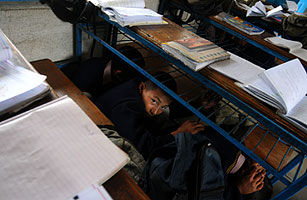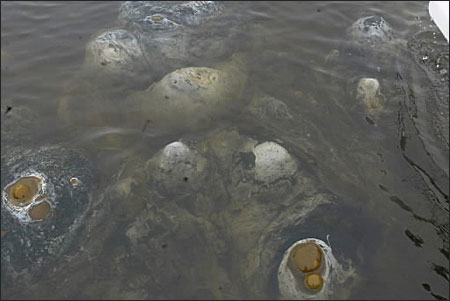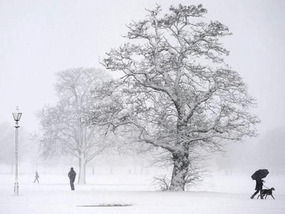
© EPA/Narendra ShresthaNepalese school children crouch under their desks during an earthquake drill at a secondary school on the outskirts of Kathmandu on Feb. 1 2010
In rows of benches with barely an inch between each other's crisp blue-and-red uniforms, the kids dutifully listen to their teacher's lesson. Once dismissed, they dash out, forming a bottleneck in the narrow passage that constitutes the hallway in this school in Kathmandu. Dozens of children fill each of the cramped rooms in the bare, crudely assembled three-story building. Most of the Nepalese capital's thousands of schools are housed in rudimentary, ill-maintained buildings, but this one happens to be uniquely sturdy. A few strategic vertical and horizontal strands of brick, fortified by steel-reinforced concrete, have been laid over the building's original adobe walls. It is among a small fraction of the South Asian nation's schools - or any private or public buildings, for that matter - designed to withstand a major earthquake.
This is not an abstract consideration. Nepal sits at the meeting point of the Eurasian and Indian tectonic plates, and the same seismic power that long ago produced the Himalayan mountain range continues to make the country an earthquake hotspot. Geologists have identified the region as due soon for a major earthquake, putting millions of people in danger and the nation's fragile economy at further risk. "The Kathmandu valley, unfortunately, has everything that Port-au-Prince has and more," says Robert Piper, the head of UN humanitarian operations in Nepal.
Working against the clock and with limited resources, a local NGO has been retrofitting a few dozen schools and hospitals in Kathmandu, and providing emergency response training to a few hundred more. The strands of brick and steel installed on the walls of the buildings act "like a rubber band," holding the structure together even if it were to sway, says Surya Prasad Acharya, an engineer with the National Society for Earthquake Technology (NSET). Though not pretty, NSET's renovations are simple, quick and cost-effective, which is crucial. Nepal is among the world's poorest countries (per capital GDP is $467) and its government has been largely dysfunctional in recent years because of infighting and civil strife.


